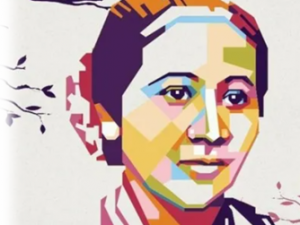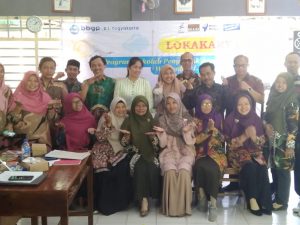
S1 Alma Ata Elementary Teacher Education – Happy International Women’s Day! On 8 March, which is one of the days when the whole world, from various countries, celebrates women’s day every year. International Women’s Day symbolises the achievements of women. Actually, where did this Internati Women’s Day commemoration come from?
Historically, in 1908 there was great unrest and critical debate among women. Oppression and inequality spurred women to open their voices and actively campaign for change. Until 1908, 15,000 women marched in New York City demanding shorter working hours, better pay, and voting rights. According to the official International Women’s Day website, the International Conference of Working Women was held in Copenhagen in 1910. A woman named Clara Zetkin, Leader of the “Women’s Office” for the Social Democratic Party in Germany proposed the idea of International Women’s Day. She proposed that every year each country celebrate Women’s Day to press for their demands. A conference of over 100 women from 17 countries, representing trade unions, socialist parties, women’s workers’ clubs, including the first three women elected to the Finnish parliament welcomed Clara Zetkin’s suggestion and thus International Women’s Day was officially agreed.
More than a million women and men attended the International Women’s Day rally demanding women’s rights to work, vote, be trained, hold public office, and end discrimination. However, on 25 March, the tragic ‘Triangle of Fire’ in New York City claimed the lives of more than 140 working women, many of them were Italian and Jewish immigrants. This event drew attention to working conditions and labour laws in the United States which became the focus of subsequent International Women’s Day events. In 1975, for the first time, the United Nations celebrated International Women’s Day. Then in December 1977, the General Assembly adopted a resolution declaring the United Nations Day for Women’s Rights and International Peace throughout the year in each member state in accordance with each country’s national history and traditions.
In 1996, the UN announced their first annual theme for International Women’s Day, which was “Celebrating the Past, Planning for the Future”, followed the next year 1997 with the theme “Women at the Peace Table”, 1998 with “Women and Human Rights”, 1999 with “A World Free of Violence Against the World”, and continues to this day. Significant changes continue to occur with regard to attitudes and thoughts about women’s equality and emancipation. With the inclusion of women in the boardroom, equality in legislative rights and the increasing visibility of women as role models, women have gained true equality. However, the fact that women are still not paid equally to men, women are not present in equal numbers in business and politics, education, health, and violence against women is worse than men. However, it is not the spotlight that continues to shine, change continues to evolve to rival the position of men.
This year, International Women’s Day takes the theme “Break the Bias” which means not being picky in gender equality. Not only the theme, but also the special colours are purple, green, and white. Purple means justice and dignity, green means hope, and white symbolises purity. The colours originated from the Women’s Social and Political Union (WSPU) in England in 1908. (cnnindonesia.com)






